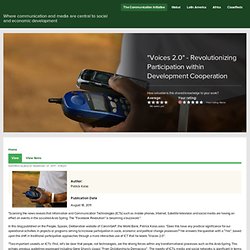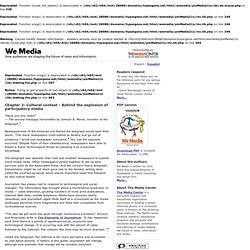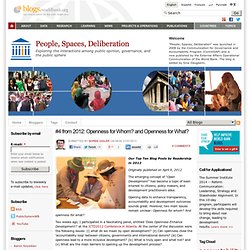

Foucault and social media: I tweet, therefore I become. This is the second instalment in a three-part series. Part one discusses how the open commons ideal of social media creates a ‘virtual Panopticon’ effect that impacts on the psychology of users. I argue, building on Michel Foucault’s account of the Panopticon: There is a self-reflexive structure to sharing content on Facebook or Twitter.
Just as actors on stage know that they are being watched by the audience and tailor their behaviour to find the best effect, effective use of social media implies selecting and framing content with a view to pleasing and/or impressing a certain crowd. We may not intend to do this but it is essential to doing it well. Part two continues the Foucaultian interrogation of social media looking at Foucault’s concept of subjectivation.
‘Never stop sculpting your own statue’, the ancient philosopher Plotinus said. Peggy Orenstein came late to Twitter. Orenstein approached her Twitter experiment with the studious detachment of the field anthropologist. Untitled. Untitled. Untitled. "Voices 2.0" - Revolutionizing Participation within Development Cooperation. "Scanning the news reveals that Information and Communication Technologies (ICTs) such as mobile phones, Internet, Satellite television and social media are having an effect on events in the so-called Arab Spring.

The “Facebook Revolution” is becoming a buzzword. " In this blog published on the People, Spaces, Deliberation website of CommGAP, the World Bank, Patrick Kalas asks: "Does this have any practical significance for our operational activities in projects or programs aiming to increase participation in socio, economic and political change processes?
" He answers the question with a “Yes”, based upon the shift in traditional participation approaches through a more interactive use of ICT that he labels “Voices 2.0”. "Two important caveats on ICTs: First, let’s be clear that people, not technologies, are the driving forces within any transformational processes such as the Arab Spring. 1. 2. 3. 4. 5. We Media » Chapter 2: Cultural context - Behind the explosion of participatory media. Notice: Trying to get property of non-object in /nfs/c02/h04/mnt/28080/domains/hypergene.net/html/wemedia/pmMedia21x/lib/weblog.fns.php on line 892 Chapter 2: Cultural context - Behind the explosion of participatory media "Have you any news?

" — The second message transmitted by Samuel B. Morse, inventor of the telegraph.1 Newspapermen of the Victorian era feared the telegraph would spell their doom. The telegraph was speedier than mail and enabled newspapers to publish more timely news. Journalism has always had to respond to technological and social changes. "The way we get news has gone through momentous transition," Kovach and Rosenstiel write in The Elements of Journalism. Unlike the telegraph, the Internet is far more pervasive and accessible by just about anyone. This chapter attempts to shed light on the cultural factors that have provided the fuel for this explosion of participatory media.
Extending social networks People are inherently social creatures. Traditions, Poverty and Community Dialogues for Safe Practices. Subtitle: Inclusive Approaches for Behavioural and Social Change Communication Affiliation: United Nations Children's Fund (UNICEF) "[E]xcluded communities should be informed and sensitised to change their attitude, behaviours and practices which is necessary for their empowerment and change through innovative communication and social mobilization methods and strategies.

" Posted on the United Nations Children's Fund (UNICEF) intranet, this paper explores strategies being developed to address factors responsible for social disparities, especially for hard-to-reach and socially excluded communities in India, and social and cultural conditions and behaviours and traditional practices amongst, for example, dalits (termed "Scheduled Castes" and "Scheduled Tribes" in the Constitution of India) and certain sections of minority communities like the Muslim minority.
The introductory section provides context. DeliberationBrief.pdf (application/pdf Object) Exploring the interactions among public opinion, governance, and the public sphere. Our Top Ten Blog Posts by Readership in 2012 Originally published on April 9, 2012 The emerging concept of “Open Development” has become a topic of keen interest to citizens, policy makers, and development practitioners alike.

Opening data to enhance transparency, accountability and development outcomes sounds great. However, two main issues remain unclear: Openness for whom? And openness for what? Two weeks ago, I participated in a fascinating panel, entitled ‘Does Openness Enhance Development?’ What do we mean by Open Development? While Matthew Smith from the International Development Research Center (IDRC) stressed that ‘Open Development’ is still very much an emerging concept, he notes some key principles needed to transform development: Opening up data and information (e.g.
He emphasized that the concept of Openness combined with the rapid proliferation of ICTs (e.g. social media, inter-active mapping) and the emerging ‘networked society’ can affect real social change. Openness for Whom?